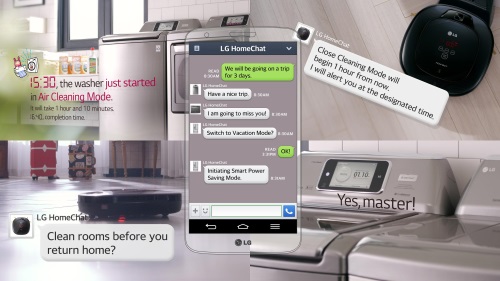How do companies sell the internet of things to consumers? This was the question at the opening panel of the Internet of Things World conference in San Francisco this morning.
Belkin’s Chief Technology Officer Brian van Harlingen took the lead in the panel stating that the opportunity lies in making sense out of the IoT’s complexity. “With data comes complexity, we have to make it simple for the end user,” said Van Harlingen
Van Harlingen’s view was backed up by Verizon’s Chief Data Scientist, Ashok Srivastava, who understandably sees the challenge of managing the information generated by masses of devices as being an opportunity for his company and data scientists in general.
That masses of data is being generated isn’t surprising seeing the other member of the morning’s panel was Jason Johnson, Co-founder and CEO of smart lock maker August. That the ordinary door lock may be generating masses of data indicates just how much information might be churning around the average smart home in the near future.
Cut out the complexity
It may well be that all of this data and complexity isn’t necessary as Joe Dada, the CEO and founder of smarthome company Insteon, point out. “Leave the network as quiet as you can,” is his advice. “People over-estimate the amount of data that needs to be pushed across the network.”
Dada, a twenty-five year veteran of the smarthome industry, sees the over-complication of the IoT as being a weakness in many of the products and business models being touted today with his company selling their products on being convenient, safe and fun.
While Dada has a successful business model, many of the other business don’t and exactly how to make money from the IoT wasn’t really answered by the panel.
Capturing efficiencies
It may well be that for many the answer lies in making existing products better, in talking to Cisco’s Brad Bechtold who runs the networking giant’s Oil and Gas Industry Transformation division estimates that there could be operational savings of up to 11% for the sector through implementing IoT technologies.
With estimates of the oil and gas industry’s size being around four trillion dollars a year, that represents an opportunity of over a hundred billion dollars a year in the one sector alone.
Selling the IoT
So it may be that the way to sell the Internet of Things into the industrial sector is to point out the operational savings available. Should the promise of substantial cost reductions be realised then it may even trigger a new wave of capital investment as businesses decide it’s easier to upgrade equipment than retrofit it.
The analytics and management aspect will turn out to be lucrative for many businesses as well, however the key to success is going to be demonstrating how these services add value for customers.
For the consumer market however the key probably lies in Joe Dada’s advice – keep it easy, convenient, safe and fun.

Leave a Reply